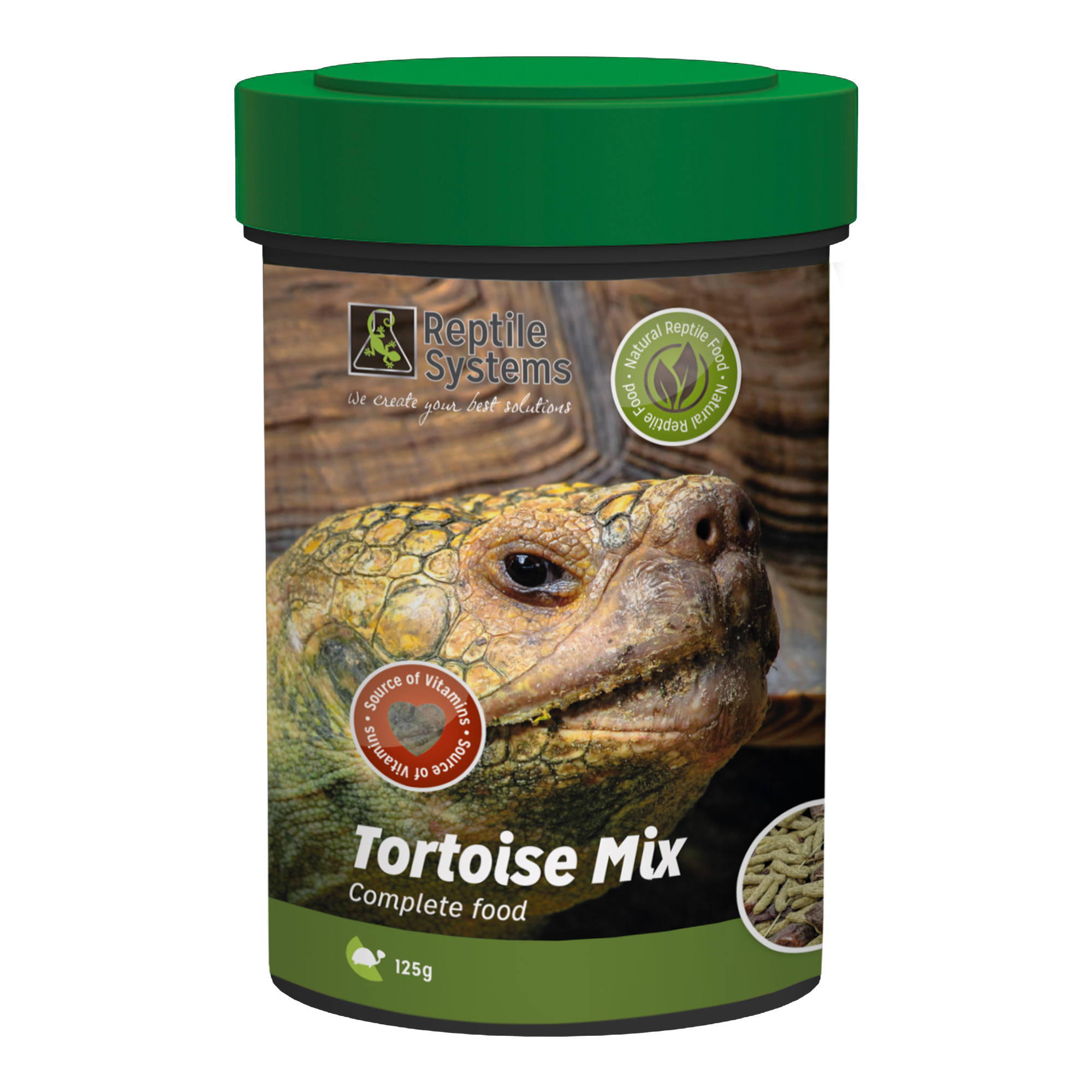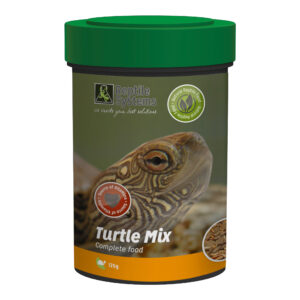Description
Tortoise Mix UK, description et caractéristiques :
Tortoise mix has been engineered as a complete feed for tortoises and other herbivorous reptiles, rich in fibre, with balanced nutrition values, especially low contents of proteins and fats, optimum proportion of calcium and phosphor. This combination of flowers and mixed leaves and a complete diet food stick has been developed in conjunction with a top European tortoise breeder.
Owning these fascinating reptiles is indeed a life choice when it comes to purchasing a pet. These cute little creatures may be in your family for generations and require specialist care and diet if they are to be fit and healthy into their old age.
In the wild, many species of tortoise inhabit warm dry regions and tend to wander around over a large range eating seasonal plants, flowers, leaves and fruit, with some even being opportunistic carrion feeders. This diet can vary dramatically throughout the year as the seasons change, with some tropical regions experiencing dry spells and others rainy. This gives rise to many different combinations of plants being consumed in various states, from young succulent seedlings to withered, dry, old leaves. Some types of tortoise are known to consume a combination of over 200 different types of plants, plus flowers and fallen fruits when in season. This is a part of what makes it is difficult to generalise regarding the correct diet for tortoises. Some, like Salacta and Leopard, feeding primarily on grasses, with others, like Red foot and Yellow foots, feasting on seasonal fruit falls. These latter species, along with African Hindgebacks, will also take earthworms, slugs, snails and even millipedes as part of there natural diet. This is part of the confusion when it comes to feeding regimes as much information is over generalised, not taking into account all the different species and their dietary habits. Research and good information are key for successful tortoise keeping as many husbandry shortfalls may not become evident for many months or years, in some cases.
The most popular tortoise species, kept and bred in captivity, are the Mediterranean ones: Hermanns, Graeca, Ibera, Marginated and Horsfield. We even have a Spur Thighed tortoise, Testudo Gracea at our UK facility. The native diet in the wild would consist of leaves, grasses and flowers or, what many of us would consider, weeds, which are grazed on over a wide area. As always, we recommend using as close to a wild diet as possible and suggest you do the same. We grow suitable plants all year round, both outside in planters and indoors, under New Dawn LED lighting, to provide fresh, safe, organic greens and suitable flowers. This allows us to have access to a variety of tortoise-friendly food, grown from seeds and cuttings many of which are easily available through specialist suppliers.
Our modern lifestyle is very busy, balancing many different pursuits at a time, whilst trying to maximise other important aspects of our life. Collecting and growing weeds may not be for everyone but there is no telling when your circumstances may change. Store bought salad and fruit items may seem like an easy alternative but really are not the best options. Many mass farmed salad items such as lettuce and cucumber have little nutritional value and very little fibre. Be wary of vegetables such as peas and beans as they contain Phytic Acid and should be avoided as it impairs the absorption of minerals such as iron, zinc, magnesium and, most importantly, calcium. Root vegetables such as carrots, swede and parsnips should be fed in very limited amounts as they are very high in carbohydrates, dark leafy greens, such as spring greens, cabbage and kale being the better vegetables to use. Tortoises love the sweet taste of fruit but, other than Red and Yellow Foots, it can be detrimental to their digestive systems and should be offered in very limited amounts. A tortoise convenience food, such as the ones used for most pets, would be ideal in this circumstance. We have looked at many of the commercial tortoise foods that are available, and some were severely lacking . We decided this was not good enough and accepted the challenge to do better. The biggest objective, however, is trying to make a good quality food at an affordable price. This is how Tortoise Mix went from being an idea for better animal welfare to a tangible product.
Because tortoises are like “shelled goats”, they will pretty much eat anything you give them, which can lead to health problems. The two biggest concerns are: lack of fibre which will lead digestive problems and foods that are too high in protein that will cause liver, kidney problems and severe shell deformities. A good guideline for animals in captivity is to look for foods high in fibre but low in fruit and proteins and incorporate them into a calcium rich diet complemented by the use of correct lighting. This will allow for nice smooth shell growth without any digestive health problems that many tortoises have been plagued with in the past.
Although our food and general advice is primarily aimed at the Mediterranean tortoises (Testudo species), with some research and adaptions, it can be used as a convenient stand-by, when combined with other mixed food sources, for other types of tortoise and box turtles. It can also be used as a nutritional constant; as part of an optimized combination of seasonal plants and flowers to add variety. Things like Hibiscus and Opuntia cactus pads make a great addition, adding variety, roughage and calcium.


